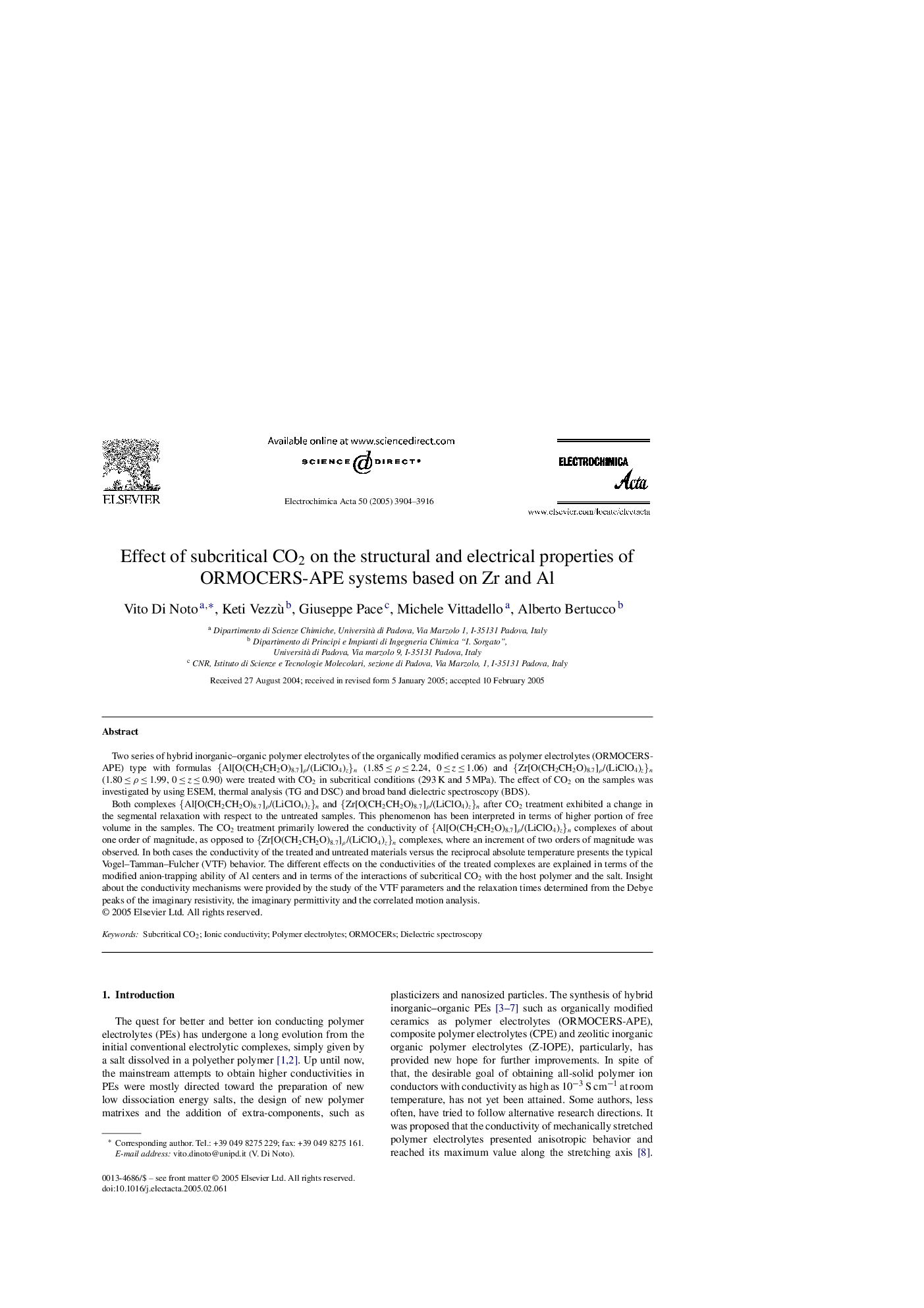| Article ID | Journal | Published Year | Pages | File Type |
|---|---|---|---|---|
| 195976 | Electrochimica Acta | 2005 | 13 Pages |
Two series of hybrid inorganic–organic polymer electrolytes of the organically modified ceramics as polymer electrolytes (ORMOCERS-APE) type with formulas {Al[O(CH2CH2O)8.7]ρ/(LiClO4)z}n (1.85 ≤ ρ ≤ 2.24, 0 ≤ z ≤ 1.06) and {Zr[O(CH2CH2O)8.7]ρ/(LiClO4)z}n (1.80 ≤ ρ ≤ 1.99, 0 ≤ z ≤ 0.90) were treated with CO2 in subcritical conditions (293 K and 5 MPa). The effect of CO2 on the samples was investigated by using ESEM, thermal analysis (TG and DSC) and broad band dielectric spectroscopy (BDS).Both complexes {Al[O(CH2CH2O)8.7]ρ/(LiClO4)z}n and {Zr[O(CH2CH2O)8.7]ρ/(LiClO4)z}n after CO2 treatment exhibited a change in the segmental relaxation with respect to the untreated samples. This phenomenon has been interpreted in terms of higher portion of free volume in the samples. The CO2 treatment primarily lowered the conductivity of {Al[O(CH2CH2O)8.7]ρ/(LiClO4)z}n complexes of about one order of magnitude, as opposed to {Zr[O(CH2CH2O)8.7]ρ/(LiClO4)z}n complexes, where an increment of two orders of magnitude was observed. In both cases the conductivity of the treated and untreated materials versus the reciprocal absolute temperature presents the typical Vogel–Tamman–Fulcher (VTF) behavior. The different effects on the conductivities of the treated complexes are explained in terms of the modified anion-trapping ability of Al centers and in terms of the interactions of subcritical CO2 with the host polymer and the salt. Insight about the conductivity mechanisms were provided by the study of the VTF parameters and the relaxation times determined from the Debye peaks of the imaginary resistivity, the imaginary permittivity and the correlated motion analysis.
